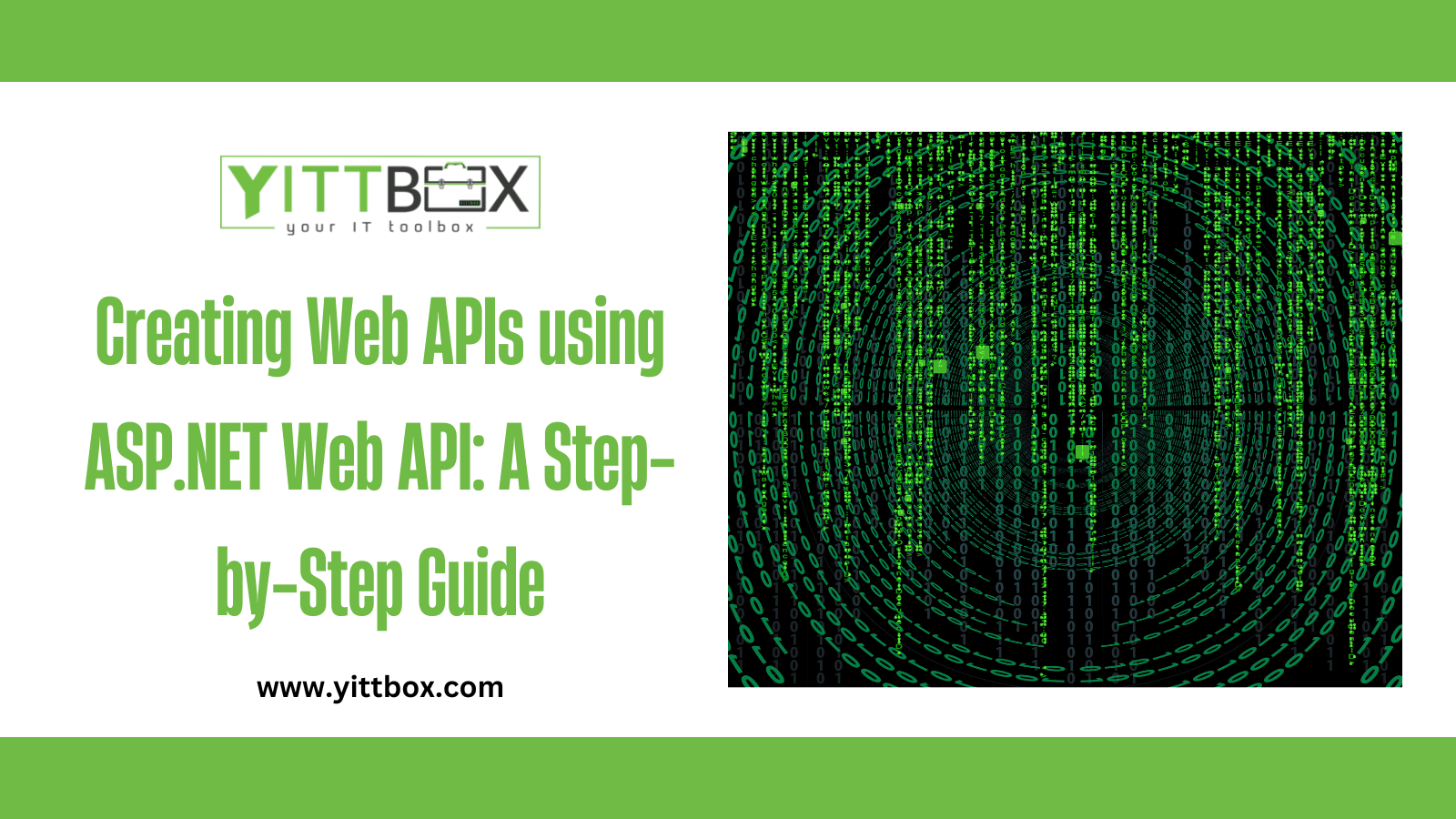Introduction: Creating Web APIs using ASP.NET Web API
In today's fast-paced digital landscape, building efficient and scalable web APIs is essential for creating powerful web applications. ASP.NET Web API, a versatile framework by Microsoft, empowers developers to craft robust APIs that facilitate seamless communication between different software systems. In this comprehensive guide, we'll walk you through the process of creating web APIs using ASP.NET Web API, while optimizing your content for search engines.
Why Choose ASP.NET Web API?
ASP.NET Web API offers a range of advantages for building web APIs:
- HTTP-Centric Approach: ASP.NET Web API is designed around the principles of the HTTP protocol, making it perfect for creating APIs that adhere to RESTful architectural style.
- Flexibility in Data Formats: It supports multiple data formats such as JSON and XML, allowing your APIs to cater to a wide range of clients.
- Seamless Integration: ASP.NET Web API integrates smoothly with other ASP.NET components, making it a perfect fit for your existing ASP.NET projects.
- Routing and Controllers: The framework provides robust routing capabilities and controller-based architecture for managing API requests efficiently.
- Security and Authentication: You can implement various authentication mechanisms to ensure secure API interactions.
Step-by-Step Guide: Creating Web APIs with ASP.NET Web API
Step 1: Setting Up Your Development Environment
Before diving into API creation, ensure you have Visual Studio installed. Create a new ASP.NET Web API project to kickstart your development journey.
Step 2: Defining API Routes and Controllers
Understand the importance of routing and how it maps incoming requests to appropriate controllers. Create controllers to handle different endpoints, making your APIs organized and easy to manage.
Step 3: Designing Data Models
Lay the foundation by designing your data models. Whether you're working with databases, external APIs, or other sources, proper modeling ensures data consistency and integrity.
Step 4: Serialization and Content Negotiation
Learn about serialization, the process of converting complex data types into formats like JSON or XML. ASP.NET Web API's content negotiation feature ensures that clients receive data in the format they prefer.
Step 5: Handling Requests and Responses
Dive into HTTP methods like GET, POST, PUT, and DELETE. Implement actions within controllers to handle these methods, enabling clients to interact with your API effectively.
Step 6: Implementing Authentication and Authorization
Explore authentication methods such as OAuth, JWT, or API keys to secure your APIs. Implement authorization to control access to specific API resources based on user roles.
Step 7: Error Handling and Exception Management
Nobody likes errors, but they're inevitable. Learn to handle exceptions gracefully and provide meaningful error responses to enhance the user experience.
Step 8: Versioning Your APIs
As your API evolves, versioning ensures smooth transitions for existing clients. Implement versioning techniques to avoid breaking changes while introducing new features.
Step 9: Testing and Debugging
Thoroughly test your APIs using tools like Postman or Swagger. Debugging is essential for identifying and rectifying issues before your API goes live.
Step 10: Deployment Strategies
Choose between on-premises hosting or cloud platforms like Azure for deploying your API. Proper deployment practices ensure your API is accessible, reliable, and scalable.
Conclusion: Creating Web APIs using ASP.NET Web API
Creating web APIs using ASP.NET Web API opens the door to building dynamic and interconnected web applications. Following this step-by-step guide empowers you to create APIs that are efficient, secure, and easy to maintain. By optimizing your content for search engines, you're making sure that your guide reaches developers eager to learn the art of API creation with ASP.NET Web API. Start your journey now and unlock the potential of seamless data exchange and enhanced application functionality.







